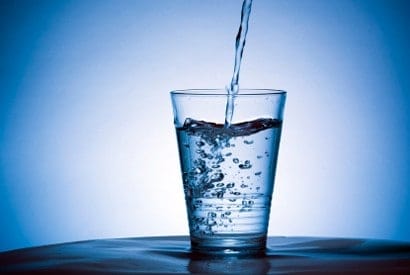Photovoltaics promise to help meet our energy needs by turning sunlight into electricity. We can’t run everything that way, but with a little tweaking, photovoltaic materials can use solar energy to split water into hydrogen and oxygen.
Cornell researchers are studying how this works, hoping to make the process more efficient and less expensive. “There are several existing systems, but none actually work well,” said Peng Chen, the Peter J. W. Debye Professor of Chemistry.
Hydrogen from these reactions could power vehicles with clean-burning hydrogen fuel cells, or could be combined with carbon dioxide to make methanol, which could be distributed through our existing liquid-fuel system. The latter approach has the added benefit of taking carbon dioxide out of the atmosphere.
Chen and colleagues studied water-splitting activity on the surface of nanorods of the semiconductor titanium dioxide, finding that variations in the structure of the surface determine where and how the reaction takes place. They report their results in the Feb. 4 issue of the journal Nature.
When a photon of light hits a crystal of titanium dioxide, the added energy kicks an electron into a higher energy level, leaving behind a “hole” – a space where an electron ought to be but isn’t, that looks like a positive charge. If electrodes are attached to the crystal, the free electrons will flow through a circuit as an electric current.
But in the presence of a catalyst – in this case cobalt borate – the array of positive charges can withdraw electrons from a water molecule (whose formula can be written as H-O-H), pulling it apart into a positively charged proton – the nucleus of a hydrogen atom – and a neutral hydroxyl radical, or OH. The OH radicals combine into hydrogen peroxide (H-O-O-H), which the catalytic reaction again pulls apart into protons and oxygen.
To study the reaction, Chen’s research team focused a powerful microscope on titanium dioxide rods about 127×1,735 nanometers in a microfluidic chamber through which water was flowed. A light microscope can’t see chemical reactions, so Chen employed a technique he calls “fluorescence microscopy,” adding chemicals to the water that change into a fluorescent material when the reactions take place. One changes in the presence of free electrons; the other changes in the presence of OH radicals, which are produced when water is split. When the sample is zapped with a laser to induce fluorescence, the microscope sees flashes of light that reveal where the reactions are taking place.
Alternating from one probe to the other, they observed that the reactions were not distributed evenly across the surface. Water splitting occurred only at certain “hotspots” that seem to be characterized by some irregularities in the surface or the presence of a few “doping” atoms.
“This gives us a way to improve the process,” Chen said. “Now we know where to deposit the catalyst according to the map of the hole and electron reactions on each nanorod.”
If our reporting has informed or inspired you, please consider making a donation. Every contribution, no matter the size, empowers us to continue delivering accurate, engaging, and trustworthy science and medical news. Independent journalism requires time, effort, and resources—your support ensures we can keep uncovering the stories that matter most to you.
Join us in making knowledge accessible and impactful. Thank you for standing with us!

